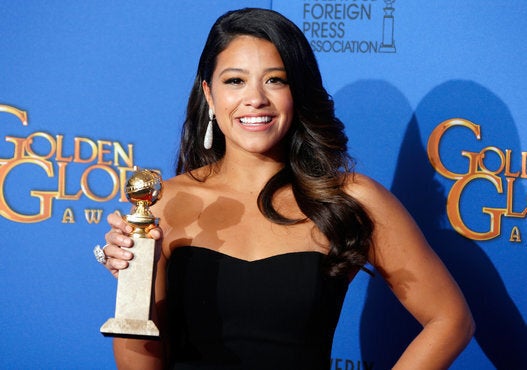
Abercrombie & Fitch is back with another apology, is it?
That's probably to be expected.
Going on the record as a brand that wants attractive, skinny, popular kids in its clothes (and by inference would rather the fat loners of the world buy and wear something else) is the sort of thing that causes people to take offense.
I get that.
But honestly, I feel a bit sorry for A&F CEO Mike Jeffries, whose recently recirculated 2006 remarks are of the root of the current controversy. Because all he did was say out loud, and without apology, what the vast majority of clothing lines out there already seem to be thinking and practicing.
"We go after the attractive all-American kid with a great attitude and a lot of friends," Jeffries told Salon writer Benoit Denizet-Lewis. "A lot of people don't belong [in our clothes], and they can't belong."
Mean, cynical, and a recipe for poor self-esteem?
Probably.
But take a little cyber stroll over to the websites of virtually any of A&F's competitors and you'll find a visual depiction of exactly what Jeffries articulated. Aéropostale's home page is a parade of slim, cheerful, conventionally attractive young men and women in shades. Not a wrinkle or love handle in sight. Over at American Eagle Outfitters, the models are similarly smiley, social, and devoid of the acne, sags, and bags (not to mention mopey moments and isolation) that make self-acceptance such a challenge in the real world. The "cool kid" scene is similar, if just a teensy titch older (we're talking 23 instead of 18), in the J. Crew and Banana Republic online realms, despite the fact that these brands are presumably marketing to a wealthier and older crowd.
We know this, right? The reason we're attracted to the glossy clothing catalogues featuring naturally beautiful 19-year-olds sipping cafe au laits (that happen to be the exact same creamy shade as their flawless skin) is because somewhere in our reptilian brains we believe that if we put on the same pair of capris, we'll suddenly acquire the sleek bodies, photogenic friends, and worry-free lives being pictured. It's not logical. It's partly based in a sense of dissatisfaction with ourselves, our shapes, and our circumstances -- a dissatisfaction that is compounded with every page flip to another lithe model casually stretched out on an artfully cluttered chaise lounge. (Wow, if I get a trainer, buy those ballet flats, and learn to be more stylishly messy, that could be me.) But come on. Who hasn't been swayed toward a purchase by this kind of brand image play? And -- perhaps more to the point -- what brand doesn't make use of this technique on a near-constant basis?
At least Mike Jeffries is being upfront about it. Usually clothing companies make awkward gestures toward inclusivity that are, if you ask me, more insulting and depressing than anything Jeffries said.
I remember flipping through a J. Crew catalogue a few years ago when I was hitting my mid-thirties and wondering whether I was getting too old for the brand (there was suddenly a lot more lamé than I could make sense of).
"It's ok," a little voice inside my head said. "You can be like the old one."
It was true. There was always an "old" model hanging out there among the 20-year-olds, and she looked fantastic. Just as happy, self-possessed, and perfect as the others. If I bought the white linen tuxedo pants and wore them with classic sneakers, I could be her.
"Are you nuts?" another voice inside my head replied. "The 'old' one is Lauren Hutton -- LAUREN FUCKING HUTTON! She's been on the cover of Vogue 25 times. You're not going to look like her just because you're both closer to menopause than childhood."
The same goes for the "ethnic" ones or the "fat" ones who show up occasionally in clothing marketing. They're supposed to be evidence of the brand's inclusivity, but it's not like seeing an impossibly gorgeous and perfectly coiffed Asian woman who wears a size 8 instead of a size 00 is all that helpful or empowering to a painfully shy, overweight teen, struggling to find her place. Or to most of us, when it comes right down to it.
It's like Tina Fey said in her book Bossypants, when discussing the fact that female celebrities no longer have to be skinny white women to be considered attractive:
"All Beyonce and JLo have done is add to the laundry list of attributes women must have to qualify as beautiful. Now every girl is expected to have Caucasian blue eyes, full Spanish lips, a classic button nose, hairless Asian skin with a California tan, a Jamaican dance hall ass, long Swedish legs, small Japanese feet, the abs of a lesbian gym owner, the hips of a nine-year-old boy, the arms of Michelle Obama, and doll tits."
What the cool kids look like may change, but it'll still always be the cool kids clothing lines go after because the cool kids are who most of us want to be in our heart of hearts. We can reason with ourselves and work toward overcoming this tendency with our intellects. We can, and should, help young people in particular to realize that there are many profound satisfactions to be had in life that do not rely on achieving a certain appearance or level of popularity (a fact that becomes comfortingly obvious as we age, yet is often difficult to grasp in high school). But we shouldn't blame A&F for being honest enough to articulate an omnipresent elitist marketing strategy no one else wants to own up to. We are, after all, the ones that make such strategies pay off.
